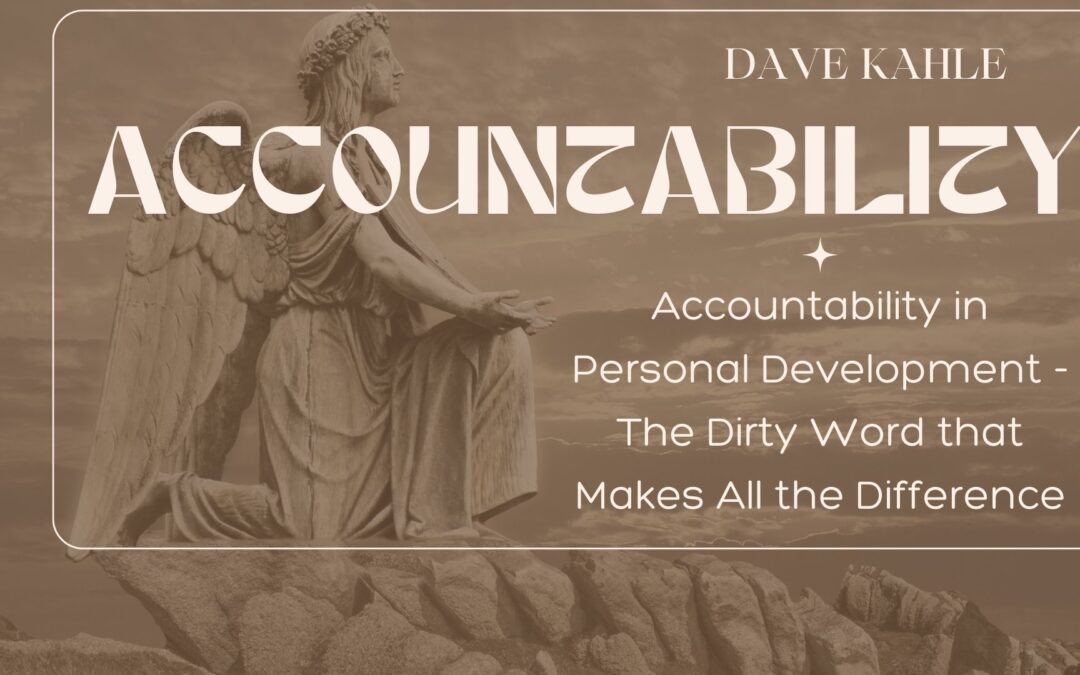Accountability – It’s The Dirty Word that Makes All the Difference
I’m a morning lap swimmer. Three times a week, I jump into the community pool at about 7 AM and vigorously swim laps for 30 minutes. It keeps my back pain free and contributes to my overall state of health.
At least, that’s what I tell other people, and myself. The truth is that I often can’t conjure up the energy to do that, and I often roll over and nod off for another half hour or so. On the one hand, I know that swimming is a good thing; it brings all kinds of benefits. On the other, I often skip it.
Why is that?
As a seasoned trainer, I have often noted the same phenomenon, manifesting in a sales training or management training setting. Generally, the audience is convinced of the power and efficacy of the practices I have taught them. They buy it, intellectually. They can see themselves doing it and recognize the benefits. They will often come up after the seminar and praise the contents. They are ready to go.
Yet, a few weeks later, a significant portion of them won’t be doing that which they said they would do. In spite of the good intentions and the intellectual ascent, most of the group won’t put it into practice.
Turning Thoughts Into Actions
This is not a new or unknown scenario. I call it the ‘gap between idea and action,’ and it is one of the largest chasms in the road hindering our path to personal and organizational improvement. The gap between idea and action describes the ubiquitous phenomenon that we, all of us, have ideas and intentions, and yet turning those into actions – habits and routines that enhance our skills and smooth out our lives, only happens a bit of the time. As a general rule, we’re miserable at it.
If we can bridge that gap, we can supercharge our growth, feel less guilt and become more confident in our progression as a human being. Bridging the gap should not be a hit-or-miss affair. It shouldn’t happen by chance, serendipitous event, or be a one-off experience. To really supercharge our growth and improvement, we need to develop a systematic, reproducible, reliable approach to bridging the gap between idea and action.
If we could do that, we could actually achieve those New Year’s resolutions. It wouldn’t take us nearly as long to master that new software. Our growth in soft skills would manifest itself in less interpersonal conflict. We would master the nuances of our jobs, run our businesses more adroitly, and become the leaders and the people we were meant to be. In other words, we’d become more adept at our jobs, run our businesses more effectively and enhance our relationships. Life, in a world with no gap, would be fuller and more fulfilling.
So, what is the missing link? It is a dirty little word that most of us shrink from. We shrink from the idea and recoil at the sound of it.
That word is…Accountability.
The dictionary defines it as the fact or condition of being accountable; responsibility.
Accountable is defined this way: (of a person, organization, or institution) required or expected to justify actions or decisions; responsible.
“parents could be held accountable for their children’s actions”
In common practice it looks like this: You have a pre-arranged meeting with someone important to you. At that meeting, the person helps you bridge the gap between idea and action by calling you out on your actions. He/she asks these questions, in this sequence:
Did you, in fact, do what you said you would do?
If not, why not?
What are you going to do differently in this next period of time to ensure that you do it?
Having to defend yourself to someone you respect is painful. So painful in fact, that the pain and embarrassment of having failed to do what you said you were going to do is generally sufficient to keep that action at the top of your mind and motivate you to bridge the gap.
Allow me some examples from my practice. Here’s one example. We teach a system for sales managers to use to manage their remote field salespeople. One part of that system is the monthly meeting in which, among other things, the managers are trained to ask those three questions. Referring to the rep’s previous month’s plan, the manager asks, “Did you do what you said you were going to do?
Knowing that those questions are coming and coming from his/her boss is generally sufficient to motivate the salesperson to focus on completing the plan. The results in terms of sales effectiveness are predictably positive. Salespeople become more adept and confident, sales managers feel more in tune, and sales go up.
Here’s another. In our sales training system, we have developed a format that requires the manager to hold a monthly AEF meeting (Accountability, Encouragement, Follow Up), every month during the training. Now, not only must the salesperson answer to his/her boss, but he/she must do so in the presence of his colleagues.
Communication improves, the salespeople practice and master the behaviors we taught them that month, a culture of continuous improvement is created, a common language is created, and a set of concepts becomes the strategy of the organization. Sales go up. Often, dramatically so. The key is the series of questions that the manager asks the sales team.
The concept doesn’t just apply to my sales-related constructions. Any place where it is important to close the gap between idea and action, the use of accountability can lay down the bridge that allows easy passage.
It may be a personal issue, like a new year’s resolution or swimming laps in the morning. It could be a parenting issue, like insisting a teenager be more respectful. Or it may be an organizational issue, like improving customer service, increasing ship rates, or learning a new software program.
When human beings know that they will be held accountable for their behavior, they change their behavior to bridge the gap between idea and action.
Accountability is the dirty word that everyone shirks from and that holds the key to continuous, unlimited growth and development.


Recent Comments